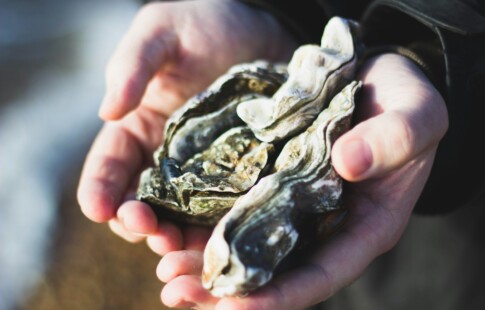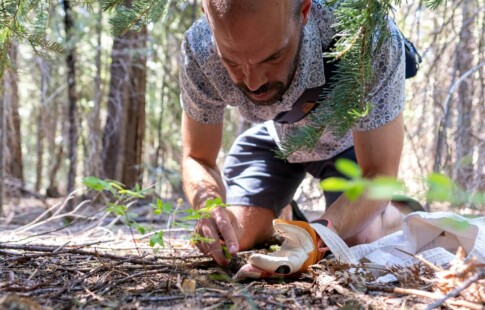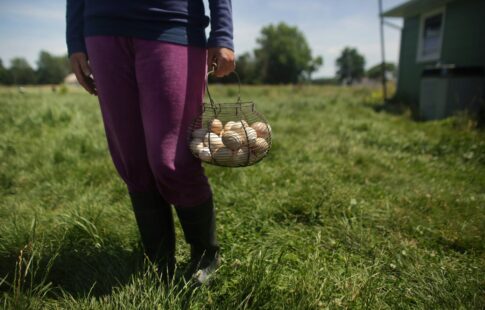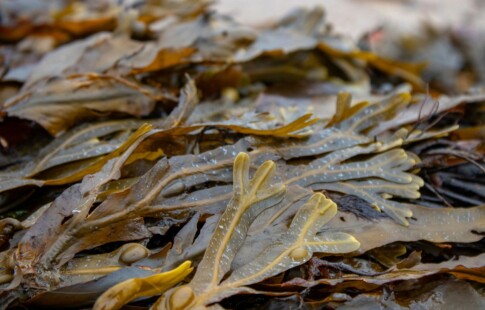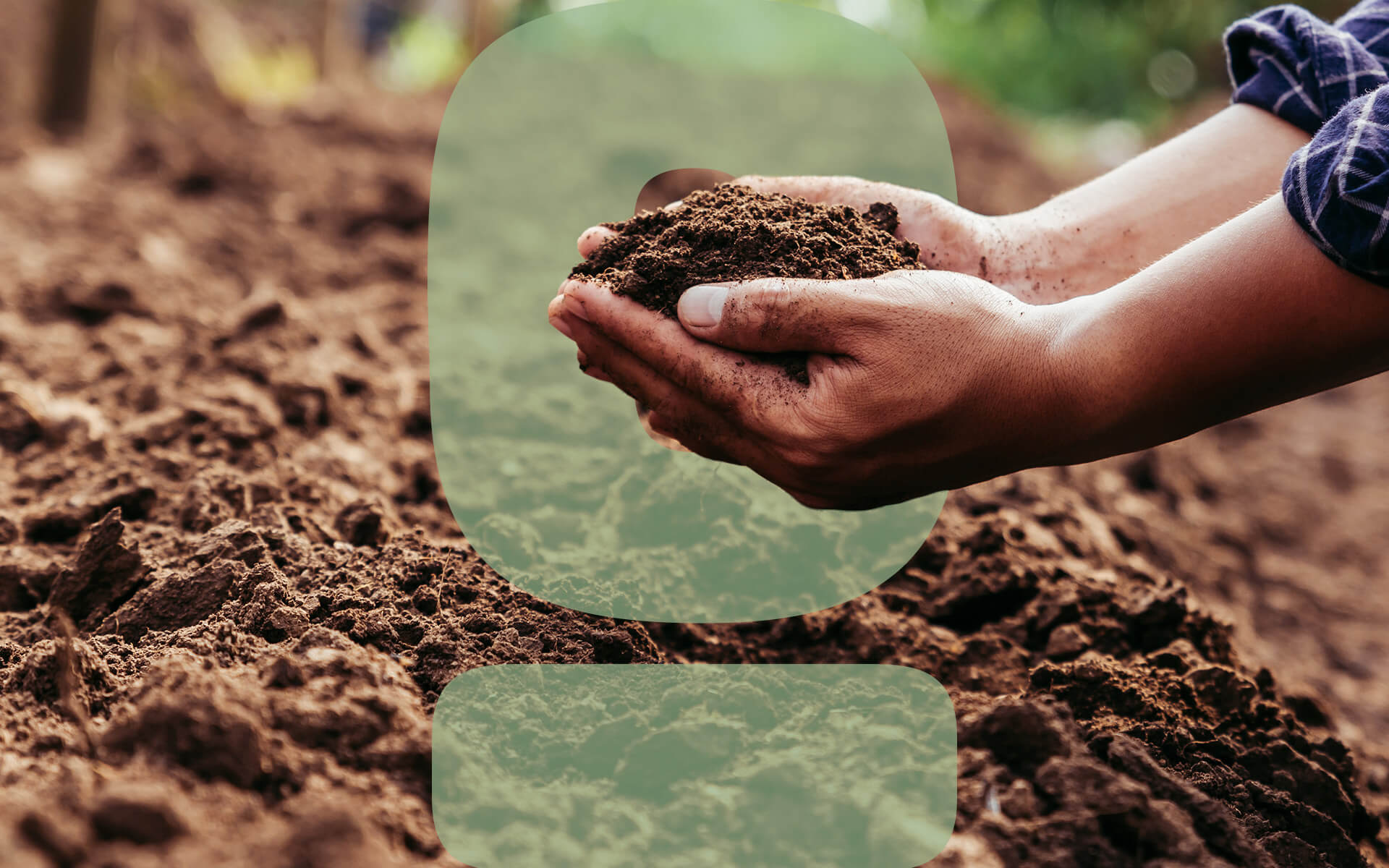
How to Use Compost in Your Garden
We are reader-supported. When you buy through links on our site, we may earn affiliate commission.
Have you ever considered making your own compost? Many people never attempt to create compost because they’re intimidated by the process. However, the process isn’t nearly as complicated as it seems Like many other projects, you can make composting as simple or as complicated as you wish.
The rich organic material created by composting is incredible for your soil health and will give your plants the boost they need to thrive. The basic principles of composting can be followed with very little trouble and great reward for your plants. Here’s how you can make and use compost in your garden.
What Actually Is Compost?
Compost is made up or decomposed organic matter. It has a different consistency and chemical makeup from soil. The ground underneath your feet is a living ecosystem that’s filled with fungi, bacteria and other important organisms. Although soil contains organic matter, compost doesn’t contain everything you’ll find in soil.
Gardeners use compost to amend their soil, or to help their soil become healthier. A lot of topsoil is depleted of the important nutrients plants need to thrive. You can stimulate microbial activity and cultivate a healthier environment for your plants. Every time you add compost to your soil, your garden will become healthier.
Science of Composting
To thrive, plants need access to five different nutrients: hydrogen, carbon, phosphorus, oxygen, nitrogen and potassium. Some of these nutrients are found in water, some in air and some in the soil itself. Adding compost to your garden increases these nutrients and protects the soil from being depleted throughout the growing season.
Ideally, soil should have a pH of between 5.5 and 7.5. Some plants, like blueberries, prefer more acidic soil. However, if the soil becomes too acidic, plants will be able to absorb heavy metals that are stored in the ground. Exposure to lead, cadmium and mercury will stunt and eventually kill your plants.
Compost can help to naturally balance the pH levels in your soil. If your garden is too acidic, additional organic matter will increase your soil’s alkalinity. If it’s too alkaline, compost will bring your soil’s pH level down. It does this by stimulating living organisms in the soil like worms, mycorrhizae and rhizobia.
The specific ingredients you use can affect its acidity. For example, pine needles are naturally acidic. On the other hand, adding wood ash can reduce its acidity. The best way to keep your compost from becoming too acidic is by turning it frequently as it breaks down. This keeps plenty of air in the pile and prevents anaerobic bacteria from becoming too prevalent.
Methods for Making Compost
To make compost, you need to create the right conditions for organic material to break down. The basic idea is to mix organic material known as “green matter” with “brown matter.” Although gardeners use different ratios, 50/50 is a good place to start. Introduce water and air to this mix and then let bacteria, worms and other life forms break the organic material down into compost.
The terms “green matter” and “brown matter” can be a little confusing. Green matter is organic material that’s rich in nitrogen. Although it’s typically green, it can sometimes look brown! Examples of green matter are grass clippings, vegetable scraps, coffee grounds and tea bags. Meat and cheese scraps do not qualify as green matter.
Brown matter is organic material that’s rich in carbon. Some examples of brown matter include dry leaves, sawdust, pine needles, cardboard and newspaper. You shouldn’t incorporate any brown matter that has a shiny finish – like ads in the newspaper or stickers on cardboard boxes. These materials won’t break down quickly and may have toxic chemicals in them.
How Long for Compost to Break Down?
Depending on your method, composting can take anywhere from 10 days to 3 months to complete. Large compost piles heat up from the inside, speeding up the decomposition process. However, smaller piles can decompose quickly too if you put them straight on the ground. That way, the worms and bacteria already in your soil can help with the process.
If you use ingredients with a small surface area, your compost will break down much faster. For example, sawdust and grass clippings will decompose faster than strips of cardboard and large vegetable scraps. Some gardeners run their materials through the mower before mixing them to speed up the process.
To build a pile, layer brown and green materials. Mix thoroughly and spritz your pile with water as you build it. The goal is to keep the material damp but not wet. The most important part of composting is to turn and mix your pile thoroughly at least once a day. Aerating your compost will ensure it stays healthy and breaks down quickly.
How to Use Compost
You’ll know your compost is ready to use when the ingredients have broken down into fine particles. However, you can also use it while it’s still chunky since it will continue to break down once added to your soil. A mixture that’s full of beneficial bacteria will feel light and fluffy. Sludgy or muddy compost is too acidic and needs to be reworked.
There are several ways to incorporate fresh compost into your garden. If your plants are already growing, you can sprinkle it over the top of the soil. This is known as top-dressing. It introduces nutrients to the soil without disturbing existing root systems. Many gardeners top-dress in late summer to give their plants a boost.
You can also mix compost into your soil before you plant in the spring. Aim for a few inches in the top layer of your garden bed. Some gardeners cover their compost with mulch to prevent it from drying out or washing away. As your plants grow, their root systems will allow these nutrients to push deeper into the soil.
50/50 Compost Mixtures
Although it is wonderful for your plants, it’s not usually a good idea to plant in only compost. This is because many of the beneficial bacteria and minerals found in soil aren’t present in compost. Most gardeners recommend you mix 50/50 compost and soil at the most. A little will go a long way in improving your garden.
Another way to use compost is to make “tea.” You soak the finished compost in water to infuse the liquid with nutrients from the organic matter. Most gardeners brew their tea overnight. If you leave it for more than 36 hours, it can develop unhealthy bacteria like E. coli. Once the tea is brewed, you water your plants with it.
Rain also naturally turns top-dressing into compost tea. After you add compost to your soil, rainfall can help the nutrients soak deep into the ground. Although compost is excellent for your soil, it’s not the only thing that matters for a vibrant garden. Growing a diverse range of plants and rotating crops also helps to keep your soil healthy.
Amend Your Soil
Composting is a simple process that will enrich your soil and benefit every plant in your garden. Every gardener has their own method and ideal ingredient list for creating a compost pile. You can read about this process for hours, but the only way to gain experience is by putting these concepts into practice. Don’t wait – start your first compost pile today!
After this organic matter breaks down, you can add it to your soil by top-dressing, mixing it into the ground or watering your plants with compost tea. If you want to use compost inside, consider sterilizing it with boiling first. This will kill beneficial bacteria, but it will also protect your indoor plants from takeover by fungi, seeds and outdoor insects.
Share on
Like what you read? Join other Environment.co readers!
Get the latest updates on our planet by subscribing to the Environment.co newsletter!
About the author
Grace Waters
Always inspired by the natural world around her, Grace grew up exploring tide pools and hiking mountain trails, developing a deep appreciation for biodiversity and conservation. Now, Grace works as the Senior Editor of Environment.co where she covers topics related to emerging clean technologies, zero-waste initiatives, and the intersection of environmental policy and everyday living.

